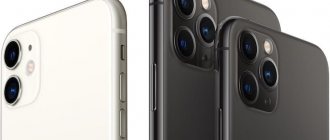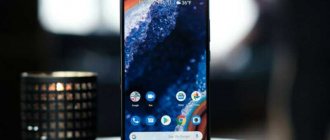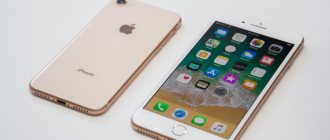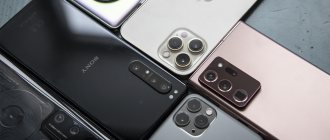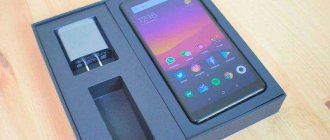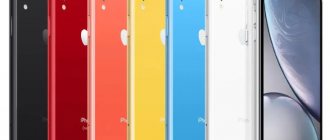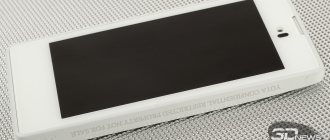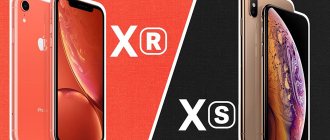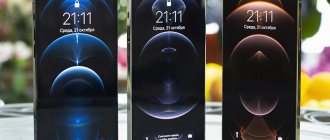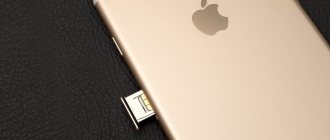Apple has long been demanded to take the cameras in the iPhone more seriously. Cupertino residents listened, but how carefully?
We've written reviews of the smartphones themselves - catch up if you missed them: a review of the iPhone 11 and a review of the iPhone 11 Pro.
This article will focus exclusively on cameras, their capabilities, changes after the iPhone Xs and personal impressions of shooting.
I will provide photos for each camera, some of them will have sliders. I warn you: because of this, the article “weighs” a lot , so it may take longer to load than usual.
Go.
? Wide-angle camera in iPhone 11 and iPhone 11 Pro. What changed
I noticed that many people incorrectly call the main camera on the iPhone. Either “shirik” or “super-shirik” are written, and you can’t understand which one they really mean.
Let's remember. The main camera on the iPhone is wide-angle , and it has been that way since time immemorial. Do not confuse wide-angle and ultra-wide-angle modules, they are completely different.
The wide-angle cameras of the iPhone 11 and iPhone 11 Pro Max are one hundred percent identical . There is not a single hidden feature reserved exclusively for the Pro or Max models. I checked.
Shots taken without zoom with the main cameras of the iPhone 11 and Pro look the same on the MacBook Pro screen. In this situation (I’ll say something about zoom separately) there is complete parity between 11 and Pro.
The iPhone 11's screen resolution doesn't allow the camera's photos to shine as much as they should.
However, I’m not just mentioning a laptop with a good screen. On the smartphones themselves, the difference seems to be not in favor of the iPhone 11, and the reason for this is its display. Just as I didn’t like him in XR, I’m not happy with him here either. Not so much in color reproduction, but in resolution.
With such a diagonal, the display of a regular “eleventh” iPhone does not convey all the detail of camera photos as well as the high-resolution OLED matrix does in the iPhone 11 Pro.
I can’t help it, but I constantly see grain in the film frames that is not present in the photograph itself. I hope that next year at least honest Full HD will be returned to this line of smartphones.
Anyway.
Characteristics of the main camera of iPhone 11
“Shirik” in iPhone 11 and Pro consists of six lenses. Shoots at a resolution of 12 megapixels with a pixel size of 1.4 microns (micrometer). Focal length – 26 mm, aperture ƒ/1.8.
The iPhone Xs camera had exactly the same parameters.
Then what's the upgrade? Let's remember: We compared photos from iPhone Xs Max and iPhone 8 Plus
Firstly, the sensor has changed. Only Apple engineers know exactly how it was improved. Officially, they only said that fast focus technology - Focus Pixels - now covers 100% of the matrix. It's no surprise that...
The camera now focuses faster and more accurately . This is true, the difference between the iPhone 11 and, say, my old iPhone X is noticeable to the naked eye. Especially in low light: the “ten” misses four times out of five, while the “eleven” almost always captures even small details in the shadows.
Secondly, we added improved image stabilization in video . There are plenty of examples, here is one of them:
Read more: Star Wars director shot short film on iPhone 11 Pro
Stabilization itself is not a new feature. It was in both the Xs and X. This year, Apple “simply” changed both the lens vibration reduction mechanics and post-processing.
The result when shooting handheld, IMHO, is very decent, but for a smartphone it’s absolutely amazing. It’s a pity that physics has not yet been fooled - strong shaking still causes a “wave” effect and image distortion. You still need an external stabilizer if you are going to shoot video for professional purposes.
Thirdly, we have improved the Smart HDR post-processing algorithm thanks to the A13 processor in the iPhone 11. Due to it, the balance between light and shadows is better conveyed, which is especially important when shooting in sunny weather, during the day in general, and especially in winter.
Snow is traditionally hard on smartphone cameras, and on my iPhone X it turned into a completely white canvas.
One can argue for a long time about why the change in the Smart HDR algorithm did not spread to the iPhone Xs - but we will never know the answer to this, except for the one on duty (the processor is like new, everything is fine). Unless we figure it out and leave it up to Apple.
We've sorted out the technical differences, sample photos and a comparison with the iPhone X below.
The smartphone can only recognize living objects
The iPhone 11 is very similar to the iPhone XR, not only in appearance, but also in functionality - there are very few differences between the smartphones. One of the features of the new product that differentiates it from its predecessor is the ability to take portrait photographs not only of people, but also of animals - all thanks to the presence of an additional camera that helps the smartphone determine the “depth” of objects. Many, including me, assumed that the camera would be able to take portraits not only of animals, but of any objects - unfortunately, there is no miracle, and the iPhone 11 incorrectly blurs photos of inanimate things in almost all cases. In fact, this cannot be attributed to the disadvantages of the smartphone, since Apple did not announce such functionality (officially, the smartphone is only capable of blurring people and the “faces of pets”), but it does add up to the list of capabilities that the gadget lacks.
Examples of photos taken with the main (wide-angle) lens of iPhone 11 and iPhone 11 Pro
Video
New iPhones do not have 8K, nor the ability to switch between cameras at 4K 60 fps. I would also note one drawback: there is no way to switch between the front and other cameras.
However, the iPhone camera can easily make the best video recordings among smartphones. It does it quickly, the sound quality is excellent, the limiter and compressor work very well: I was at a rock concert, where, due to the acoustics, I heard nothing but noise and ringing in my ears. The next day I watched the videos shot on the iPhone 13 Pro and was dismayed by the sound: in them you can hear notes and melody that were inaudible yesterday!
Here are examples of how all three compared iPhones shoot video:
Of the obvious points, I would like to note that some objects on the iPhone 13 Pro are overexposed. I believe the reason is a more open aperture, as well as a larger sensor. Because of this, the camera does not have time to expose in the right way. Well, or this is a glitch that appears on the device at the very beginning of its use.
There is also significant progress compared to the ultra-wide-angle camera of the iPhone 12 Pro / 12 Pro Max - detail is better, there is much less purple in the dark. Well, I don’t really understand why the difference between 2.5× and 3× is so invisible.
? Telephoto camera in iPhone 11 Pro. Nice and useful upgrade
The “telephoto” itself is not at all new for iPhones. It appeared in the iPhone 7 Plus, remained with the 8 Plus, and then delighted owners of the X and Xs, including the Max.
There was a thing: Our photo battle. Testing iPhone 7 against iPhone 6s – who will win?
This year, only the iPhone 11 Pro and Pro Max have a telephoto lens . The captain suggests that the regular iPhone 11 does not have it. The iPhone XR didn't have it either.
So, I’m disappointed that the telephoto remained exclusive to the more expensive iPhone model. I don’t speak for everyone, but I take most photos with a telephoto lens. Without her it’s like having no hands.
iPhone 11 Pro, telephoto, blur effects turned off.
In normal lighting, a telephoto lens provides a “free” optical zoom, which allows you not to get very close to the subject and at the same time make it the real center of the frame, cutting off everything unnecessary. The absence of typical distortions for the wide lens (the main iPhone lens) is also an important plus.
It’s great to photograph people, faces, animals, and even food on a telephoto due to the longer focal length. The resulting frame resembles the fruits of shooting with a good DSLR plus a 40mm prime. You can repeat this on the iPhone XR or iPhone 11 with their “widths” only in a photo editor, and only conditionally.
In general, iPhone 11 owners pass up my favorite lens. But what new will it give to iPhone 11 Pro buyers?
iPhone 11 Pro telephoto lens specs
The telephoto camera in the iPhone 11 Pro consists of six lenses and takes photos with a resolution of 12 megapixels. Pixel size is 1.0 µm (micrometer). Focal length 52 mm, aperture ƒ/2.0.
What differences are there (and not only here) from the iPhone Xs?
Firstly, the aperture has finally been improved . Both in X and in Xs there was ƒ/2.4, now it is 0.4 less.
In simple terms, the telephoto camera can now capture a little more light and blur the background a little more, even without portrait mode. ƒ/2.0 corresponds to the minimum aperture of many prime lenses for full-size cameras.
From a technical point of view, this is a great achievement for Apple and mobile photography in general. So that you understand, the Samsung Galaxy Note10+ telephoto can “fall” to ƒ/2.1, and the Huawei P30 Pro can only drop to ƒ/3.4.
This photo is taken on an iPhone 11 Pro telephoto without the software blur effect.
Secondly, the telephoto now takes photos brighter and at the same time more detailed. Yes, the fact is logical according to the previous point, but we still need to talk about it separately.
Look, here’s an educational program about how the telephoto lens on an iPhone generally works. If there is a lot of light in the frame, then it actually works. As soon as the light “goes away,” the lens automatically turns off - it is replaced by the main camera (“shirik”) with the support of digital zoom. It is worse than natural optical in a telephoto: more noise, less detail.
On the Xs and X the telephoto was very capricious. As soon as he doesn’t like it, he’ll immediately say “goodbye” and hello to digital zoom. On the iPhone 11 Pro, he became more patient. Replacing the camera during the daytime is an exception to the rule both in cloudy weather and indoors during the day.
This means that photos with the telephoto lens of the iPhone 11 Pro will be captured more often with it, with true optical zoom. The quality is better, details are not lost in post-processing. I hope I explained it more or less, I’m not very good with metaphors today.
Thirdly, portrait mode works at close range . I first noticed this during the shooting process, then I looked at the characteristics and made sure that everything was logical with such an aperture upgrade.
You no longer need to nervously shake the camera or move far away trying to shoot some object with a blur effect. An arm's length distance is enough for the iPhone 11 Pro to successfully activate the effect.
It's difficult to explain what's so amazing about this. It’s just that I personally was constantly bothered by the “move away” messages on the iPhone X. You stand and juggle your iPhone for 10 seconds, squat down, take a step back... there’s nothing like that anymore, and that’s why I’m glad.
In general, I will be satisfied with any upgrade of this module, so I’m almost 100% satisfied here. It has only one drawback, related to the night mode (or rather, its absence).
Fake brightness in low light
In the past, shooting in low-light conditions was very difficult for Apple smartphones. But the iPhone 11 handles it decently. In all the photos in the gallery above, people's faces are in shadow because the light sources are always behind them. Despite this, the smartphone made the skin very light, without neglecting naturalness. In addition to the skin, absolutely all objects in the photographs became lighter - in reality they are darker. Some areas (mainly faces) are quite noisy - the camera could use more aperture (a module with an f/1.8 aperture is used).
But how is it that the camera aperture of the new smartphone is exactly the same as in the iPhone 7, but the 2022 model shoots much brighter? It's not just the increased pixels, but also the aggressive post-processing. Looking at the finished photographs, I was surprised how much brighter the pictures were than they should be - this is good, but strange. As it turned out later based on a tip from @Shegiva, the iPhone 11 artificially increases the brightness of the finished photo, which is captured in the video above. Fortunately, you can get rid of over-brightness if you change the main frame in the Live photo editing mode and do not save the change, and then return the original one and save.
1 photo was taken without on-screen flash. Photo 2 was taken with screen flash
The front camera performs quite averagely in low light - f/2.2 aperture is clearly not enough. The pictures are noisy. The images in the gallery above were taken with a significant lack of light. A wide-angle lens brightens up the situation, but does not save it. The on-screen flash works well - the smartphone selects exactly the shade of white that suits the particular case best.
Examples of photos taken with the telephoto lens of the iPhone 11 Pro
Cinematic style
This effect has become a kind of portrait mode for video. That’s what foreign media and bloggers call it, and that’s what I’ll call it too. And I also agree with the opinion that it still doesn’t work very well: the blur boundaries are too obvious, the face looks like it was cut out from somewhere, and some kind of horror happens to the hair.
Sometimes a very decent picture still comes out. However, it only works with people whose hair is tight and does not frizz.
“Cinema effect” works on three cameras: wide-angle, telephoto and front. Ultra-wide is out of business.
Among the advantages, I note that changing the focus point occurs very smoothly, just like a movie. Although sometimes I would like to adjust the speed of its change.
Many people are confused by the fact that the maximum quality is 1080p and the number of frames is 30. I can’t help but agree with these confusions. The resolution will probably be higher next year.
? Ultra-wide-angle camera in iPhone 11. Better than GoPro
Here it is, the main feature of the new iPhones. The ultra-wide-angle camera is included in the iPhone 11 and iPhone 11 Pro/Max. Both technically and functionally the module is absolutely the same in both smartphones.
There has never been such a lens in any iPhone or iPad model; this is a new product in the ecosystem. Maybe that’s why she’s, let’s say, a little “unfinished.”
This is precisely a tool, creative or even household . He has room to grow in everything, including the quality of shooting. “Ultra-wide” works without critical problems and fulfills its task, but there are still an unusually large number of minor shortcomings and strange limitations.
The main feature of the ultra-wide-angle camera is how much information it captures in one frame . Thanks to the huge viewing angle of 120 degrees, almost everything that a person would see if the camera were right in his eyes fits into the photo.
If you take a photo close to your face, your legs and other hand will be included in the frame. Have you seen videos from action cameras like GoPro? Here, it’s about the same story, but without the focus on that same action.
The frames themselves from the “ultra-wide” are very different from those usual for iPhones. The perspective is distorted , as if the picture was superimposed on a ball. Everything that falls on the edges of the photo is stretched in height. All straight lines turn into an arc along with the horizon.
iPhone 11 Ultra Wide Lens Specifications
The ultra-wide sensor in the iPhone 11 and 11 Pro consists of five lenses and takes photos at a resolution of 12 megapixels. The pixel size is not yet known. Focal length 13 mm, aperture ƒ/2.4.
There is nothing to compare them with, because other iPhones have never had such cameras. To give you an idea, the GoPro HERO7 action camera has a 12-megapixel sensor but focuses at 17mm and has a maximum aperture of ƒ/2.8. That is, according to technical specifications, it is even worse than the one in the iPhone.
And yes, in most situations, the ultra-wide iPhone 11 actually shoots noticeably better than the GoPro HERO7:
Apple more than deserves praise: although the new iPhone is not an alternative to an action camera, their first lens of a similar kind is by far ahead of the main ultra-wide lens in the gadget world, which is already seven (and recently eight) generations old.
The ultra-wide lens has been appearing in Android flagships for a couple of years now, and we have already compared it with its closest competitor in terms of quality - Huawei P30 Pro. Spoiler: in general, the iPhone takes better pictures.
For those interested: They say the Huawei P30 Pro has a mega camera. Compared with iPhone 11 Pro
Portraits of people are excellent, but the cameras have shortcomings
The function of creating portrait photographs of people itself works well - the boundaries are clearly defined and blurred smoothly. Sometimes the camera fails to cope in difficult conditions, but this happens extremely rarely. Specifically, there are no complaints about the option to separate a person from the background - it works well. The possibility of manual post-processing, which allows you to edit the degree of background blur, is also pleasing. But pictures with bokeh effect are characterized by camera shortcomings when they appear (poor lighting - a lot of noise).
Portrait mode effects deserve special attention. They can be activated both before shooting (to see the future result) and after. There are five effects to choose from, three of which significantly change the image, and the remaining two only perform human color correction. The quality of the effects depends solely on how well the camera did at identifying people's boundaries - in the example above, the iPhone took the perfect shot, making the effects look as good as possible (the sneakers were cropped with leaves).
Artificial intelligence does a wonderful job of not only identifying one person in a frame, but also recognizing two or even three people (I haven’t tested it with a large number of individuals, but the algorithms probably wouldn’t have lost ground).
The portrait function on the front camera does not use the auxiliary matrix, since it simply does not exist - separating a person from the background rests solely on the “shoulders” of the algorithm. Fortunately, it demonstrates good results in all cases, even with incredibly difficult shooting scenarios - this can be seen in the second photo in the gallery above, when branches of the same color are located behind the hair (artificial intelligence did not cut off part of the hair on the left - just bad styling

